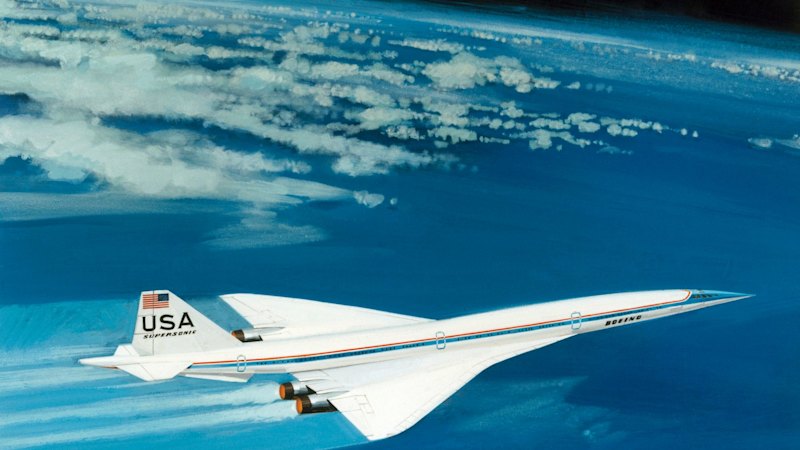
News
November 05, 2025
The Boeing 2707 – America’s failed attempt to build its own Concorde
A US company is attempting to launch commercial supersonic flights by 2029. But it’s not the first time America has tried to build a supersonic passenger plane.
**The Dream That Never Took Flight: Remembering America's Supersonic Past**
As a new generation of aviation companies aims to bring supersonic passenger travel back to the skies by 2029, it's easy to forget that the United States once harbored its own ambitious dreams of dominating the supersonic market. While the Concorde, a joint Anglo-French project, became synonymous with luxurious, high-speed transatlantic travel, America's attempt to build its own supersonic transport (SST), the Boeing 2707, ultimately failed to take off.
The Boeing 2707 was envisioned as a larger, faster, and more technologically advanced competitor to the Concorde. In the 1960s, fueled by Cold War competition and a desire to maintain its aerospace leadership, the US government poured significant resources into the SST program. Boeing's design initially featured a swing-wing configuration, similar to the F-111 fighter jet, which would allow for efficient subsonic flight at takeoff and landing, and streamlined supersonic flight at cruising altitude. The plane was projected to carry nearly 300 passengers at speeds exceeding Mach 3, significantly faster than the Concorde.
However, the Boeing 2707 faced a multitude of challenges. The swing-wing design proved to be incredibly complex and heavy, adding significant weight to the aircraft and impacting its performance. Concerns about the environmental impact of supersonic flight, including sonic booms and potential damage to the ozone layer, also began to mount. Public opposition grew, fueled by rising environmental awareness and skepticism about the economic viability of the project.
By 1971, facing escalating costs, technical difficulties, and growing public resistance, the US Congress voted to defund the SST program, effectively killing the Boeing 2707. The mock-up that had been built was never developed into a working prototype, and the dream of an American-made supersonic airliner faded away.
While the Concorde continued to fly for several decades, its own high operating costs and environmental concerns ultimately led to its retirement in 2003. Now, decades later, the renewed interest in supersonic travel offers a chance to learn from the past. Companies are exploring new technologies and designs that aim to address the challenges that plagued the Boeing 2707, focusing on reducing noise pollution and improving fuel efficiency. Whether they can succeed where the Boeing 2707 failed remains to be seen
As a new generation of aviation companies aims to bring supersonic passenger travel back to the skies by 2029, it's easy to forget that the United States once harbored its own ambitious dreams of dominating the supersonic market. While the Concorde, a joint Anglo-French project, became synonymous with luxurious, high-speed transatlantic travel, America's attempt to build its own supersonic transport (SST), the Boeing 2707, ultimately failed to take off.
The Boeing 2707 was envisioned as a larger, faster, and more technologically advanced competitor to the Concorde. In the 1960s, fueled by Cold War competition and a desire to maintain its aerospace leadership, the US government poured significant resources into the SST program. Boeing's design initially featured a swing-wing configuration, similar to the F-111 fighter jet, which would allow for efficient subsonic flight at takeoff and landing, and streamlined supersonic flight at cruising altitude. The plane was projected to carry nearly 300 passengers at speeds exceeding Mach 3, significantly faster than the Concorde.
However, the Boeing 2707 faced a multitude of challenges. The swing-wing design proved to be incredibly complex and heavy, adding significant weight to the aircraft and impacting its performance. Concerns about the environmental impact of supersonic flight, including sonic booms and potential damage to the ozone layer, also began to mount. Public opposition grew, fueled by rising environmental awareness and skepticism about the economic viability of the project.
By 1971, facing escalating costs, technical difficulties, and growing public resistance, the US Congress voted to defund the SST program, effectively killing the Boeing 2707. The mock-up that had been built was never developed into a working prototype, and the dream of an American-made supersonic airliner faded away.
While the Concorde continued to fly for several decades, its own high operating costs and environmental concerns ultimately led to its retirement in 2003. Now, decades later, the renewed interest in supersonic travel offers a chance to learn from the past. Companies are exploring new technologies and designs that aim to address the challenges that plagued the Boeing 2707, focusing on reducing noise pollution and improving fuel efficiency. Whether they can succeed where the Boeing 2707 failed remains to be seen
Category:
Technology